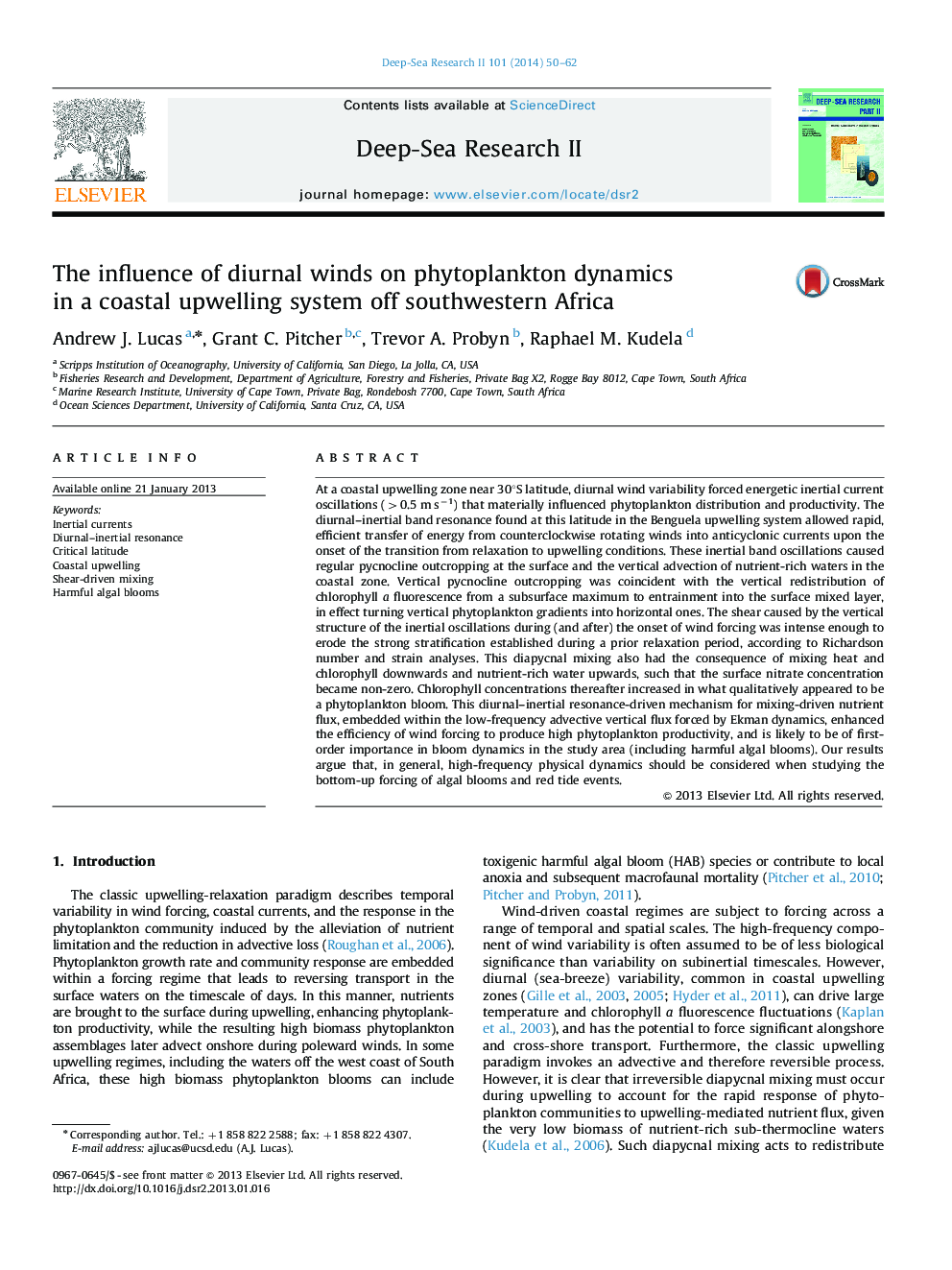| Article ID | Journal | Published Year | Pages | File Type |
|---|---|---|---|---|
| 4536361 | Deep Sea Research Part II: Topical Studies in Oceanography | 2014 | 13 Pages |
At a coastal upwelling zone near 30°S latitude, diurnal wind variability forced energetic inertial current oscillations (>0.5 m s−1) that materially influenced phytoplankton distribution and productivity. The diurnal–inertial band resonance found at this latitude in the Benguela upwelling system allowed rapid, efficient transfer of energy from counterclockwise rotating winds into anticyclonic currents upon the onset of the transition from relaxation to upwelling conditions. These inertial band oscillations caused regular pycnocline outcropping at the surface and the vertical advection of nutrient-rich waters in the coastal zone. Vertical pycnocline outcropping was coincident with the vertical redistribution of chlorophyll a fluorescence from a subsurface maximum to entrainment into the surface mixed layer, in effect turning vertical phytoplankton gradients into horizontal ones. The shear caused by the vertical structure of the inertial oscillations during (and after) the onset of wind forcing was intense enough to erode the strong stratification established during a prior relaxation period, according to Richardson number and strain analyses. This diapycnal mixing also had the consequence of mixing heat and chlorophyll downwards and nutrient-rich water upwards, such that the surface nitrate concentration became non-zero. Chlorophyll concentrations thereafter increased in what qualitatively appeared to be a phytoplankton bloom. This diurnal–inertial resonance-driven mechanism for mixing-driven nutrient flux, embedded within the low-frequency advective vertical flux forced by Ekman dynamics, enhanced the efficiency of wind forcing to produce high phytoplankton productivity, and is likely to be of first-order importance in bloom dynamics in the study area (including harmful algal blooms). Our results argue that, in general, high-frequency physical dynamics should be considered when studying the bottom-up forcing of algal blooms and red tide events.
